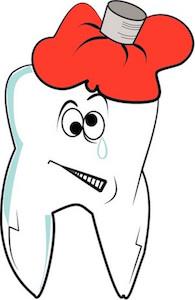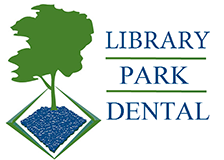What Should I Do in a Dental Emergency?

Don’t panic, and call the dentist promptly if you can see a crack or break in a tooth, or if you have swelling.
Sometimes people try to “wait it out” or see if they can fix things on their own. Oftentimes that means that what was a small problem becomes bigger, or a small infection turns into a larger one. We would rather replace a broken filling than have to give you the news that a crown is needed because too much time elapsed. Swelling usually indicates an infection that needs to be treated promptly. The dentist will be able to determine why there is an infection and what the best treatment option would be in your case.
If a tooth has broken and you can find pieces of the tooth, save them and bring them with you to your appointment.
Rinse the mouth with warm (not hot!) water. If there is bleeding, use gauze and light pressure for at least 10 minutes to stop the bleeding. Applying a cold pack to the area will help to reduce swelling. Call our office so that you can be seen promptly.
We will likely take an x-ray of the affected tooth to make sure that the nerve isn’t exposed and that the root is not affected. If the x-ray indicates the nerve is fine, the chip can be repaired with a tooth-colored composite restoration or a crown.
If the root is affected, then Root Canal Therapy may be indicated. Depending on how the tooth is fractured, either a crown or the composite restoration can then restore the appearance and function of the tooth.
We will try to see you as quickly as possible so that we can help you get your smile back!
What Should Be Done If You Have a Toothache or Swelling?
Clean Your Mouth Carefully.
Begin by flossing your teeth. Sometimes there are bits of food or a seed that is caught in between teeth. Make sure that the floss gets to the gumline and that you sweep the floss away from the gum to remove any particles.
Then you can brush your teeth carefully. Brush for two minutes, and use a toothpaste designed for sensitivity. These pastes will help to either soothe nerves inside teeth or block the tubules in the dentin. Don’t use a toothpaste that is designed for teeth whitening if you already have a toothache. Some people develop a sensitivity to those toothpastes and their teeth begin to ache after using those treatments.
Finally, rinse your mouth. You can use a mouthwash or warm salt water. The rinse will help to remove any particles that have been dislodged earlier.
Rinse with Warm Salt Water Twice a Day.
Place a teaspoon of salt in a cup of warm water. Swish the saltwater around for about 30 seconds and then spit it out. Repeat until the entire cup of warm water is gone. Do this a couple of times a day. This will help to dislodge any particles that may be lodged under the gums and it also helps to draw out some of the fluid that causes swelling.
Use Medication If Approved by Your Doctor.
If you are medically able, a non-steroidal anti-inflammatory like Ibuprofen will help to reduce inflammation and should help with the pain. Tylenol is a pain reliever that may also help.
Dr. Chiappetta and Dr. Haugstad and the staff at Library Park Dental in Kenosha don’t want you to have a dental emergency, but we want you to know how to respond if they occur.
